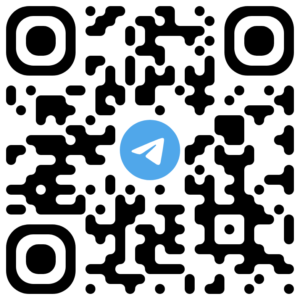Why don’t we start the 25/26 academic year communicating with extraterrestrials?
Communication with possible extraterrestrial civilizations has been part of the collective imagination for generations and there are many examples that attest to it both in literature and in cinema.
But also in science. Galileo already wondered if there were living beings on the Moon and the other planets, and researchers from all times and cultures have reflected on the plurality of inhabited worlds and if there is anyone out there with whom we can dialogue. This concern led to the beginning of the SETI (Search for Extra Terrestrial Intelligence) program back in the sixties of the last century, which since then actively searches for signs of other civilizations in the universe.
However, listening to the Universe while being silent is not an optimal way to communicate. If on the other side the alien civilizations do the same, it will be impossible to establish any type of communication, so we took the initiative and set ourselves the challenge of sending a message into space.
As a result of the collaboration between the OAUV and CESAR (ESA/INTA/ISDEFE),
This contest was born that wants to contribute to making the SETI program known to the educational community: what are its foundations, its methods, the protagonists and most noteworthy achievements and, naturally, how we will manage to establish a potential contact with an extraterrestrial civilization. What would be our intention in this first communicative act? What would we say to an extraterrestrial civilization of which we know nothing and that, most likely, knows nothing about us? What would we say to them and… In what language?
Our challenge: composing a message
Compose a graphic message or pictogram with which to establish a first contact with a possible alien civilization.
The pictogram must consist of a matrix of 73×73 pixels and each pixel can take only one of these two values: either black or white.
Download the template here to make your own pictogram. It is an essential requirement that the pictogram is accompanied by a brief report of a maximum of 1 page (in pdf and Arial 12 letter size), explaining its meaning and justification.
In addition, the images shown must comply with a series of ethical requirements detailed in our Didactic Guide.
What will it be its destination?
Of all the potentially habitable worlds that are within a reasonably close distance in terms of communication (enough time for the message to arrive and its possible response in the span of a human lifetime) this year we have selected the planet GJ1002 b which is located 16 light-years from Earth in the constellation of Cetus or Whale.
We will have to wait 32 years for a possible answer to arrive. But it would be much worse if we wanted to get there. It would take 279,000 years for the Voyager probe to arrive. So we will have to be patient.
Who can participate?
Students from schools throughout Spain from 1st year of ESO to 2nd year of Baccalaureate and Vocational Training (FPB and CCFF GM). This year, as a novelty, there will be three categories of participation and each one will opt for a prize:
Category 1: 1st and 2nd year of ESO
Category 2: 3rd and 4th year of ESO and FPB
Category 3: 1st and 2nd year of Baccalaureate and CCFF GM
When and how to participate? Key dates
The official start of the contest is on Monday, November 10, 2025. Here are the steps to participate:
STEP 1. Registration: To participate you must register your center and your groups in the following registration form.
The registration period opens on November 10, 2025 with the start of the contest and will close on December 22, 2025.
We understand a group of a maximum of 3 students.
STEP 2. Submission of papers: We will receive your proposals through the following link (which will be enabled when the date arrives) from January 7 to 31, 2026.
SUBMISSION OF PAPERS
STEP 3. Jury’s decision: The jury will publish the three winning works of the contest on Friday, February 20, 2026.
The winning messages will be selected by a committee of representatives of all the collaborating entities and the decision will be based on the criteria detailed in the following scale.
STEP 4. Sending the message to GJ1002b: The radio transmission of the message will take place between March 3 and 5.
What is the prize?
From all the pictograms that we receive from the participating centres, three messages will be selected (one per category) that will be sent to GJ1002b through INTA’s antennas at ESA’s European Space Astronomy Centre (ESAC) in Villanueva de la Cañada (Madrid).
Groups of students whose messages are selected together with one teacher per group will be invited to access the facilities of ESA’s European Space Astronomy Centre (ESAC) in Villanueva de la Cañada (Madrid) and witness the pointing of the antenna as well as personally proceed to send the message 📡 manually.
If your message is not selected, it will not be broadcast by the antennas to GJ1002b but it will be published on our website. (Registration in the contest implies acceptance of this condition).
How to work with Telegram to a Planet with your students?
Participating teachers must download the Didactic Guide in which they will find, in addition to the instructions and a template for the preparation of the pictogram, resources of all kinds to work in the classroom on the different related topics.
As a summary, we provide you with the following presentation that includes the contents of the guide.
For direct application in the classroom, we provide you with the following example of a teaching unit with a selection of content and its sequencing, as well as the corresponding exercise sheets that you can download here. (The proposed exercises are aimed at 4th ESO students. For other levels, adaptation is required)
📢 📢📢 DO YOU DARE TO INTERVIEW THE DISCOVERER OF GJ1002b WITH YOUR CLASS?
As a novelty, this year you can also participate in a videoconference during school hours so that your class can ask questions to the discoverer of the planet GJ1002 b, Alejandro Suárez Mascareño. The date and time of the videoconference will be assigned by OAUV based on the number of requests received. If you wish to participate, click on the corresponding box on the registration form.
During the production process we will be happy to answer your queries that you should send to the email address auladelcel@uv.es.
Alternatively you can follow all the news related to the contest on its telegram channel.
Go ahead for your interstellar “Hello World”!











